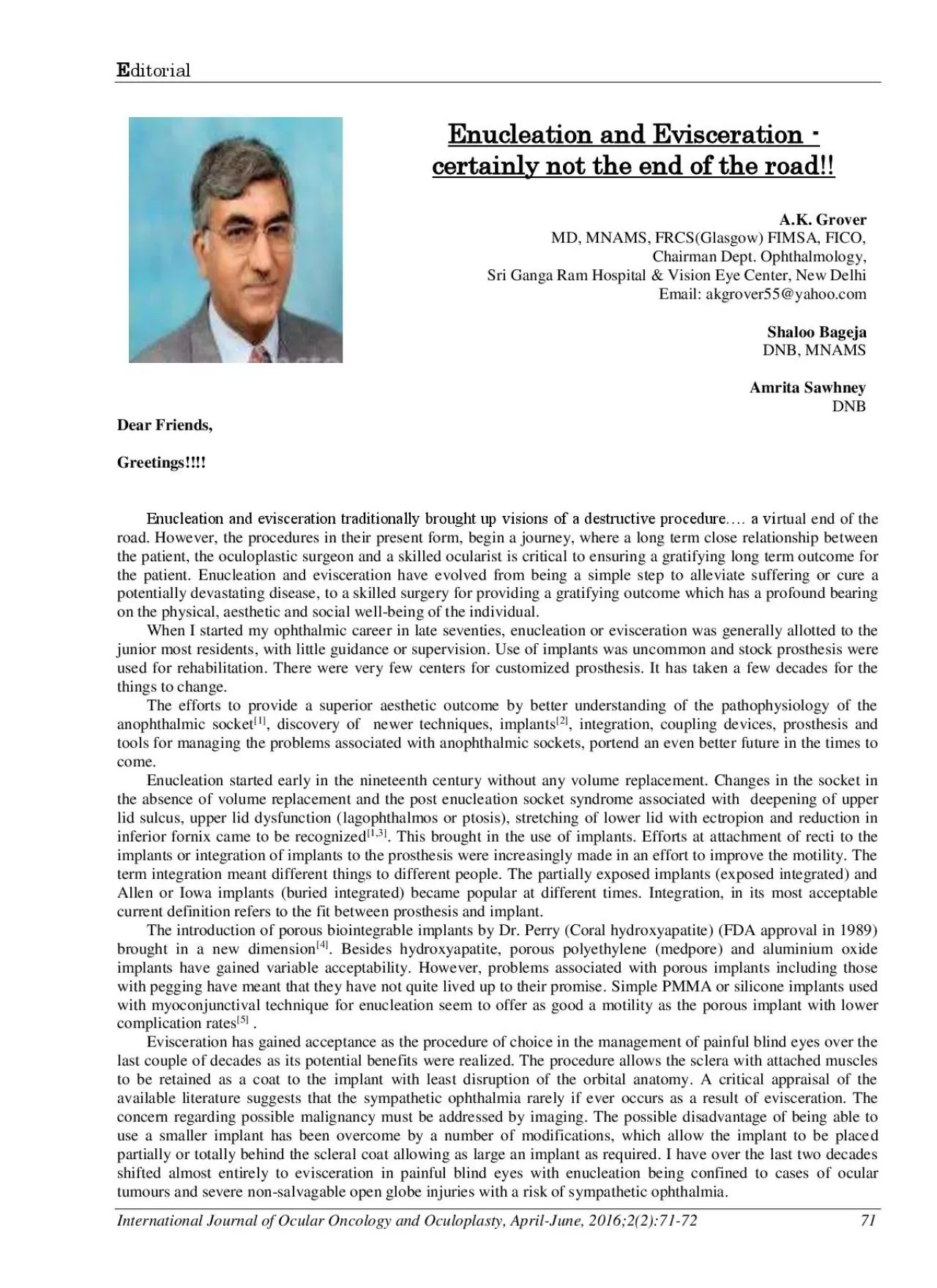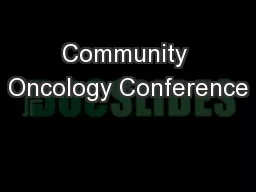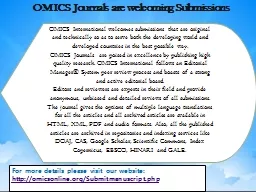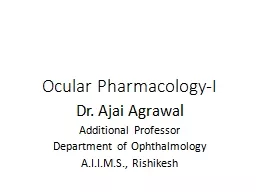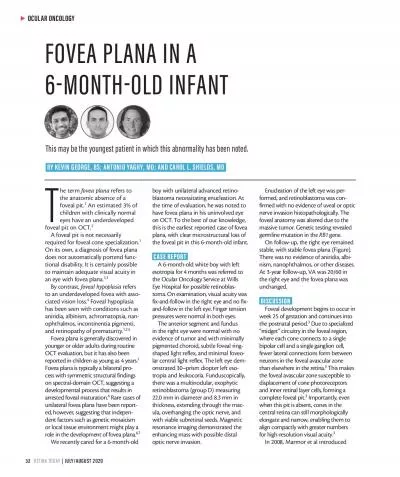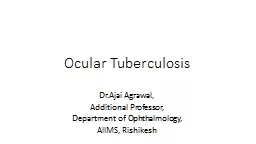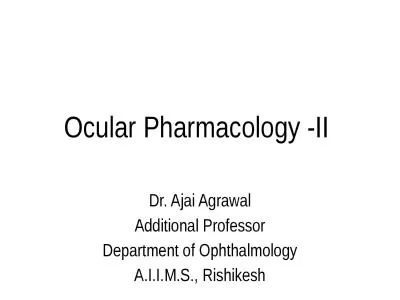PDF-International Journal of Ocular Oncology and Oculoplasty April
Author : rodriguez | Published Date : 2022-09-08
E ditorial June 201622 7 1 7 2 71 Enucleation and Evisceration certainly not the end of the road AK Grover MD MNAMS FRCSGlasgow FIMSA FICO Chairman Dept Ophthalmology Sri
Presentation Embed Code
Download Presentation
Download Presentation The PPT/PDF document "International Journal of Ocular Oncology..." is the property of its rightful owner. Permission is granted to download and print the materials on this website for personal, non-commercial use only, and to display it on your personal computer provided you do not modify the materials and that you retain all copyright notices contained in the materials. By downloading content from our website, you accept the terms of this agreement.
International Journal of Ocular Oncology and Oculoplasty April: Transcript
Download Rules Of Document
"International Journal of Ocular Oncology and Oculoplasty April"The content belongs to its owner. You may download and print it for personal use, without modification, and keep all copyright notices. By downloading, you agree to these terms.
Related Documents

